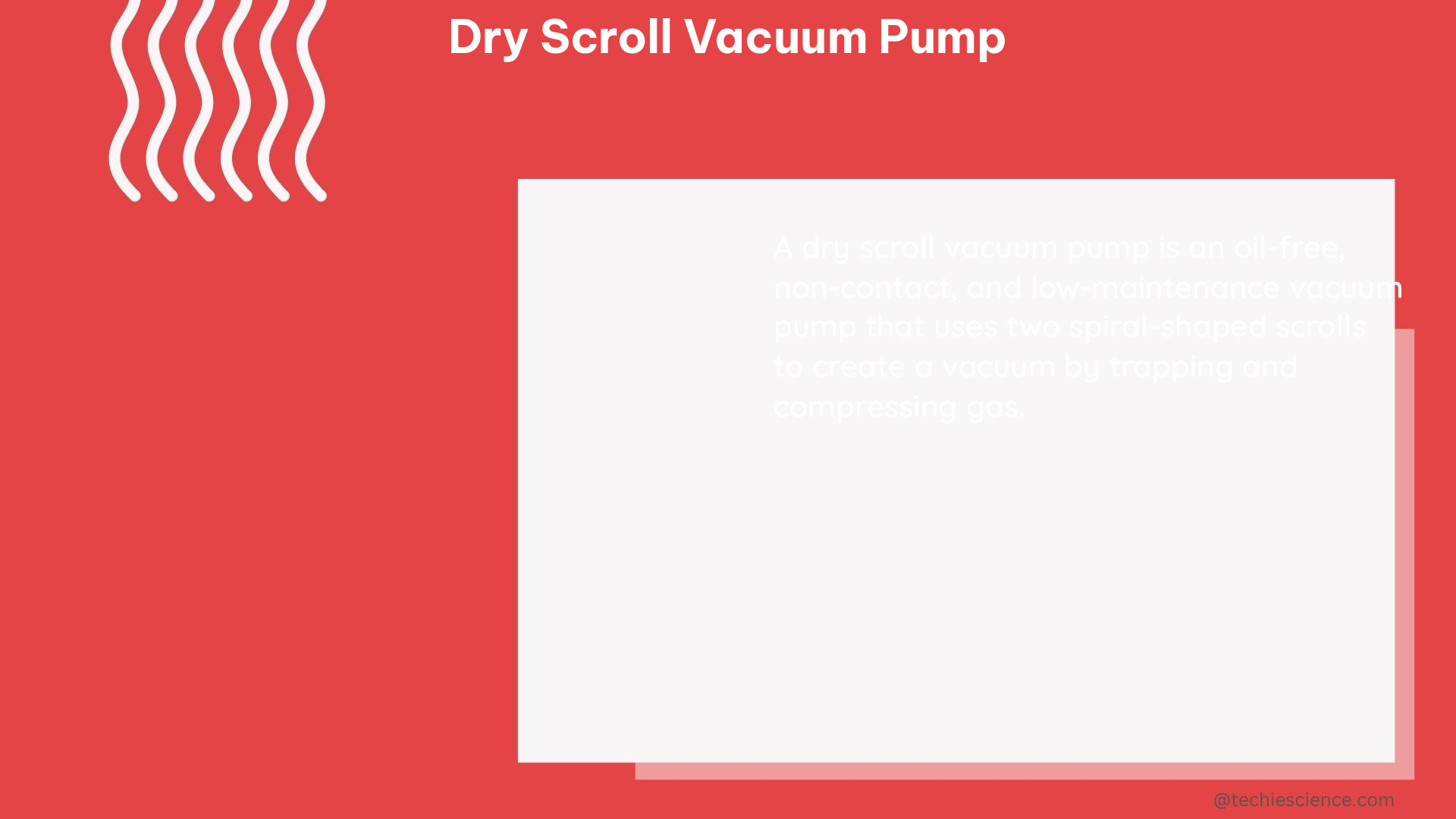Dry scroll vacuum pumps are highly efficient, clean, and low-maintenance devices that are widely used in various industrial and scientific applications. These pumps leverage the unique design of scrolling elements to create a powerful vacuum, making them a popular choice for a wide range of tasks, from semiconductor manufacturing to research laboratories. In this comprehensive guide, we will delve into the technical details and measurable data points that define the performance and capabilities of dry scroll vacuum pumps.
Ultimate Pressure and Pumping Speed
One of the key characteristics of dry scroll vacuum pumps is their ability to achieve remarkably low ultimate pressures. These pumps can reach ultimate pressures as low as 10^-3 mbar, or 0.001 millibars, making them suitable for applications that require high-vacuum environments. The pumping speed of dry scroll vacuum pumps can range from a few liters per second to several hundred liters per second, depending on the size and design of the pump. This wide range of pumping speeds allows for versatile applications, from small-scale experiments to large-scale industrial processes.
Noise and Power Consumption

Dry scroll vacuum pumps are known for their quiet operation, with typical noise levels ranging between 60 and 70 dB(A). This is significantly quieter than many other types of vacuum pumps, making them an ideal choice for environments where noise levels need to be minimized. Additionally, dry scroll vacuum pumps are highly energy-efficient, with typical power requirements of less than 1 kW, contributing to their overall cost-effectiveness and environmental friendliness.
Maintenance and Lifespan
Dry scroll vacuum pumps are designed for minimal maintenance, with typical maintenance intervals of several thousand hours of operation. This translates to reduced downtime and lower maintenance costs, making them a practical choice for a wide range of applications. Furthermore, these pumps have a long lifespan, with typical lifetimes exceeding 10 years, ensuring reliable and consistent performance over an extended period.
Thermal Management and Vibration
Dry scroll vacuum pumps can operate at temperatures up to 80°C, demonstrating their ability to withstand the heat generated during operation. This thermal management capability is crucial for maintaining optimal performance and preventing damage to the pump components. Additionally, dry scroll vacuum pumps have low vibration levels, which can help to reduce noise and improve the overall system performance.
Efficiency and Reliability
Dry scroll vacuum pumps are highly efficient, with typical mechanical efficiencies exceeding 90%. This high efficiency translates to reduced energy consumption and lower operating costs, making them an attractive choice for cost-conscious applications. Furthermore, the reliable design of dry scroll vacuum pumps ensures consistent and dependable performance, making them a trusted choice in a wide range of industries.
Considerations for DIY Applications
While dry scroll vacuum pumps are not typically considered a DIY project due to their complexity and the need for specialized knowledge and equipment, there are resources available for those interested in learning more about their design and operation. These resources can provide valuable insights into the technical aspects of dry scroll vacuum pumps, enabling DIY enthusiasts to better understand the principles and challenges involved in their use and maintenance.
Conclusion
Dry scroll vacuum pumps are a remarkable technology that combines efficiency, cleanliness, and low maintenance requirements, making them a popular choice in a wide range of industrial and scientific applications. By understanding the technical details and measurable data points that define their performance, users can make informed decisions and ensure the optimal utilization of these versatile vacuum pumps. Whether you are a professional in the field or a DIY enthusiast, this comprehensive guide has provided you with the necessary knowledge to navigate the intricacies of dry scroll vacuum pumps.
References
- Evaluation of Dry, Rough Vacuum Pumps, NASA Technical Reports Server, 2006.
- Dry Scroll Vacuum Pumps, Modern Machine Shop, 2011.
- IDP-7 Dry Scroll Pump Startup Procedure, Agilent Community, 2023.

The lambdageeks.com Core SME Team is a group of experienced subject matter experts from diverse scientific and technical fields including Physics, Chemistry, Technology,Electronics & Electrical Engineering, Automotive, Mechanical Engineering. Our team collaborates to create high-quality, well-researched articles on a wide range of science and technology topics for the lambdageeks.com website.
All Our Senior SME are having more than 7 Years of experience in the respective fields . They are either Working Industry Professionals or assocaited With different Universities. Refer Our Authors Page to get to know About our Core SMEs.